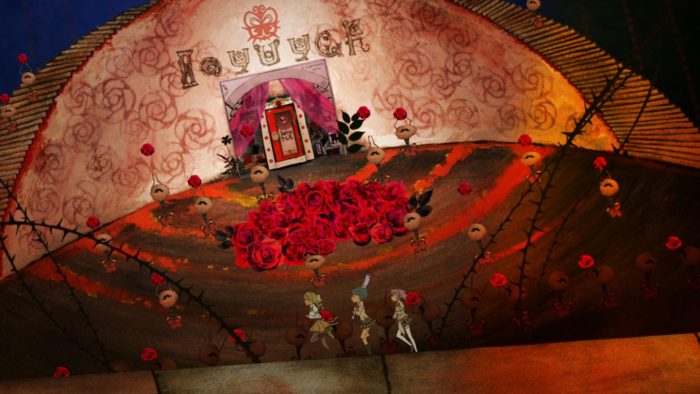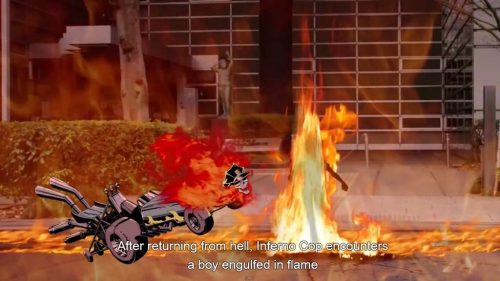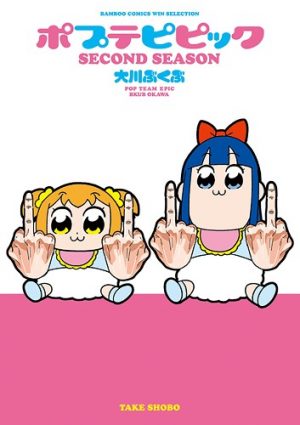
Although technology has changed the way anime is made in modern times, most notably with the move from painted cels to digital production and increased use of 3D software, the majority of anime made today still go for a more-or-less traditional, 2D look where everything is drawn by the artists; but this isn’t always the case. Today we’re exploring some more unusual techniques, specifically anime that mix in things like photography and live-action video, and the impact and possible reasoning for doing this.
World-Bending Photorealism and Comedy

Comedy in general is often underappreciated for its creativity and anime is no exception where it is probably the genre with the most visual diversity out there and that includes its use of visual techniques like photography. As you might expect, this is usually played up for jokes with its visual disconnect intentionally breaking the semblance of show’s reality and often the fourth wall in the process.
This is often done without any in-universe explanation, with a good example being the recurring joke character in Bokusatsu Tenshi Dokuro-chan (Bludgeoning Angel Dokuro-chan) that literally has a photo cutout of a monkey as its head on a drawn human body with extremely low frame “animations” of its face simply swapping between photos. This is a chaotic approach that can be really effective at creating an absurd atmosphere with another strong example being many elements of Trigger’s Inferno Cop. Greco-Roman sculptures, in particular, are often depicted this way in anime for comedic effect like the Brutus statue in Hidamari Sketch, the main cast of Sekko Boys, and the currently airing Olympia Kyklos (sort-of) which work particularly well because they call attention to the disparity between the more realistic human statues and anime proportions and stylization.
Mixed Media to Increase Intensity and Symbolism
Going off of that, the use of mixed media like photographs/scans of analog artwork can also be used in anime to heighten the visual impact of scenes to emphasize things such as the otherworldly nature of an entity like many of the bizarre witches of the Madoka Magica series and/or enhance symbolism like the giant, stigmata’d hands of key animator Takamura Kazuhiro and director Tsurumaki Kazuya in FLCL rising out of the ground near the Medical Mechanica building. In that sense, approaches like this can be used in almost opposite ways by providing a stark contrast to the usual world of the character by bringing in things from our own “real world” that feel alien or, conversely, specifically connecting the anime to the real world with a kind of metanarrative symbolism that might not be immediately obvious.
Straight Up Live-Action
Although largely uncommon, whole live-action segments have also made their way into anime for a variety of purposes with an early prominent example being the many cutaway “Portrait of an Otaku” interviews in Gainax’s Otaku no Video. In this case, they were used as part of the larger documentary to explain hardcore otaku culture as well as the founding of Gainax itself, but live-action segments aren’t necessarily just for documentation. The currently-airing Gal to Kyouryuu (Gal & Dino) has many live-action scenes with an actor in a dinosaur suit each episode that are used to tell (or sometimes re-tell) what are seemingly otherwise normal sketches that fit in with the normal story as well as a way to include some silly cameos from real-world Japanese comedians and an extremely bizarre, fourth-wall-breaking time travel (?) subplot that really caught us by surprise. Poputepipikku (Pop Team Epic) is another recent series that incorporated some live-action portions like the impressive paper flipping live animations for “Hellshake Yano”, hilarious recording booth footage of the voice actors, etc. which further showcase the potential of creative use of live-action within anime.
Final Thoughts
Altogether, Japanese anime is continuing to push boundaries when it comes to utilizing unique visual and animation styles and creating mixed media to continually shock and surprise viewers. Obviously, these choices are situational and don’t make more traditional anime any less for not including them, they are just interesting approaches that can be used in smart ways in the hands of the right creators and deserve praise for doing so! Let us know your own thoughts in the comments below and be sure to stick around Honey’s for more of all things awesome, anime and otherwise! Until next time, see ya~


